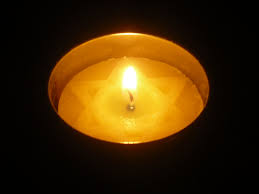For me, like nearly every other teacher in the United States, March 11th was a fairly regular day. That week, my students had competed in their regional National History Day competition and my juniors had gone on a field trip to nearby Monticello. Although it was a Wednesday, I had scheduled time off for the next two days and told my students to have a great rest of their week at Staunton High School and that I would see them on Monday. Little did I know, it would be the last time I would see them for the 2019-2020 school year – at least in person.
The next morning, I received notification early on that an appointment I had in Northern Virginia had been canceled due to accelerating COVID-19 cases in that area. As Thursday turned into Friday, as a Department Chair, I found myself in frequent contact with my Principal regarding possible release to spring break one week in advance. Still, nothing was certain, and it wouldn’t be until 2:40 PM on Friday, March 13th.
Staunton’s initial plan was to add an additional week onto spring break; however, on the first day of our “official” spring break, we received word that Governor Ralph Northam would be canceling traditional schooling for the remainder of the year. I knew that this would be a challenge for my colleagues and myself and quickly switched into planning mode. Additionally, as a regional consultant for Echoes & Reflections, I also began to think about how I could assist the school districts in my region to meet the challenge of delivering effective Holocaust instruction in this unfamiliar setting.
In my time teaching virtually, I have experienced a lot of highs and lows. My colleagues and I all missed interacting with our students in-person, and we spent many hours mourning for their lost opportunities. We also worried about those young people who live in less than ideal home-situations, and for whom school was a refuge. We deeply cared about finding ways to help our students and colleagues navigate life in quarantine. Yet, these experiences have forced me to grow as an educator and more importantly, as a human being, and to recognize “silver linings” in the midst of an overwhelming situation.
Overall, despite the craziness of the time, I have seen many students eager and ready to “take the reins” to keep learning and to pursue their intellectual and emotional curiosity in new and exciting ways. This includes hearing from an African-American student who encountered liberator Leon Bass’ USC Shoah Foundation IWitness testimony, and who shared that this was the first time she has seen “someone like herself” represented in this era of history. His impact went well beyond his experience in the Holocaust and translated into a voice of inspiration for this young person and several of her peers. Curious to learn more about African-American liberators, she asked for other testimonies to review. In many ways, the bravery and strength showcased by my students during this turbulent time was inspiring and gave me continued hope that despite the countless losses, humanity would ultimately survive in spirit and fortitude.
Another powerful moment for me was the opportunity to help a first-year colleague tasked to teach about the Holocaust for the first time via a virtual setting. He has a strong background for someone in his first semester of teaching and knew that he needed to take careful steps but was not exactly sure how to navigate the situation. Echoes & Reflections provided the perfect pedagogy and resources through which to guide him in structuring a meaningful educational experience for his sophomores, and he ultimately ended up sharing it with other colleagues because he knew it was working well. Even though I was physically distant from my colleagues, I was grateful that I still had the power to support others to succeed.
This time is also about seizing new opportunities to learn and build community with my educator colleagues. The quarantine has allowed us to rethink professional development and explore “in-person” virtual opportunities at a deeper level. My participation in the Holocaust and Jewish Resistance Teacher’s Program partnership allowed me and nearly 50 other educators to reunite without the cost of travel expenses and extended time away from families and work. We spent an incredible three hours learning together about Jewish Resistance during the Holocaust and further discovering how we can connect our students with this content in a virtual setting.
As we end the 2019-2020 school year, in many ways we also say goodbye to a distant world. Education will likely look different as we move forward and we will need to keep innovating, be willing to leave our own comfort zones, and take some risks. Nevertheless, I am hopeful that these unknowns, guided by our collective strength and dedication to this field, will unequivocally lead to success and allow us to positively impact our students’ futures.
About the Author: Jennifer Goss is a Social Studies teacher at Staunton City Schools in Staunton, VA where she has taught since 2012.





 English
English